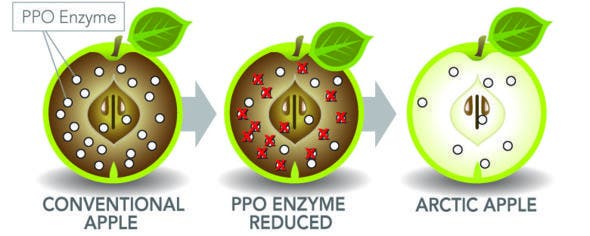A Canadian biotechnology company has modified apples to resist browning for a longer time. They call them Arctic apples.
We rarely think about where our food comes from, and we often throw a lot of food into the trash. Apples are among the most thrown away food, for a few simple reasons. They’re cheap (at least in most parts of the world), we tend to buy more than we actually eat, and if you take just one bite they’ll go brown in no time. In the UK alone 190,000 tonnes are thrown away every year especially due to this browning. But scientists may have an answer to that.
Biologists working at the Canadian biotechnology company Okanagan Specialty Fruits have now found a way to suppress that process. Browning is basically an oxidation process, taking place when the fruit’s phenolic compounds interact with the oxygen in the air. This process is driven by an enzyme called polyphenol oxidase (PPO). The Canadian team reduces this PPO enzyme by more than 90%, greatly slowing down the browning while not changing any other characteristics of the apple.

The enzyme responsible for the browning of apples is silenced. Image credits: Okanagan Specialty Fruits Inc.
They haven’t developed a completely new type of apple, but rather worked on the already popular Granny Smith, Golden Delicious, and Fuji apples. The taste and nutritious properties are left unchanged. You basically wouldn’t be able to tell the difference between a regular apple and one that has been bio-engineered to resist browning. Thus, the team hopes, people won’t be against the idea of eating modified apples – but they are aware that a heated debate is inevitable.
Arctic apples will be first harvested in 2016 and will be available for consumption in 2017. They stress that these Arctic apples are “one of the most studied foods of all time” and that it took nearly two decades before the Arctic Granny and Arctic Golden were commercially approved by the U.S. Department of Agriculture (USDA), in 2015.
So, what do you think? Would you eat an Arctic apple?









